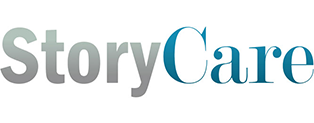139
Instructor’s Guide – Nature to Nurture
Overview:
This story is about bullying and hazing practices often associated with a healthcare worker’s indoctrination. These practices cause both unnecessary stress and premature abandonment of the field, and often compromise both the satisfaction and safety of patients.

Primary Learning Outcomes
After completing this lesson, the student will be able to:
- Evaluate and explain on-boarding practices that ensure proper supervision for safe, competent, and quality patient care.
- Describe the importance of adopting “no bullying, no hazing” policies and protocols.
- Clarify the responsibility of each team member in creating a climate of respect and professionalism for new team members.

QSEN Pre-Licensure Competencies
The following QSEN competencies are addressed in this lesson:
- Teamwork and Collaboration: Function effectively within nursing and inter-professional teams, fostering open communication, mutual respect, and shared decision-making to achieve quality patient care.
- Safety: Minimizes risk of harm to patients and providers through both system effectiveness and individual performance.
Students will answer reflection questions upon completing the story. These questions are aligned with the QSEN competencies and are designed to help the student reflect on both the content of the story and the QSEN competencies addressed by the story.
*Following each question are some potential answers
- What does this story illustrate about the importance of shared on-boarding practices?
A: Cheryl was not put in a position to succeed. This not only put her in danger, but also the other patients.
- Explain how Karen and Alice failed to create a climate of respect and professionalism in this story.
A: Kyrie and Alice spoke negatively about having a new nurse in their department and that attitude was made known to Cheryl. She was not oriented to the unit or welcomed to the department.
- How did Kyrie and Alice, and the procedures in place at the hospital, fail to minimize the risk of harm to patients in this story? What should have been done instead?
A: Alice should have learned more about Susie’s clinical skills, strengths and weaknesses. Alice is responsible for the care that Susie provides to each of the patients and needs to know the scope of Alice’s training.A: Alice should have been oriented to the unit and her surroundings. She should have then been placed with a nurse that would demonstrate the proper way to do things on that unit. She should have been given more simple tasks in the beginning and then guided through the more complicated tasks.
Discussion Questions:
Use discussion questions for face to face or online discussion boards to get students to further reflect on the content of the story together.
*Following each question are some potential answers
- What can we learn from this story?
A: That bullying and hazing can come in different forms and does not always look the same. Alice might not think she is being a bully, but she needs to know her behavior is not acceptable.
- What one thing can you do to ensure all team members are treated with respect, regardless of rank, position, or role?
A: One way is to “talk up” a colleague. Kyrie could have discussed how nice it is to have a new member to their team. Cheryl may be able to contribute in ways Kyrie and Alice did not realize.
- Have you witnessed or been a victim of hazing or bullying from other colleagues, classmates, or staff members? How did it make you feel?
A: It becomes a negative environment when nurses speak negatively about each other. Lateral violence, bullying, and hazing are all too common in the healthcare field. One way to stop this is to use open communication and learn to collaborate with all healthcare team members.
Suggested Classroom Mastery Activities:
These activities can be tailored for individuals or groups in a face to face or online setting.
- Continue this story from Cheryl’s perspective. How do you think Kyrie and Alice’s actions in this story might affect her future in the profession?
- Create a presentation to educate others on the effects of bullying and hazing in the medical profession. Use the Professional Conduct Survey to learn more about issues in the medical workplace, and do other research on your own.

Measuring Student Mastery:
| Learning Outcome | Level 1 | Level 2 | Level 3 |
| Evaluate and explain on-boarding practices that ensure proper supervision for safe, competent, and quality patient care. | Student struggles to evaluate and explain on-boarding practices that ensure proper supervision for safe, competent, and quality patient care. | Student can evaluate and explain on-boarding practices that ensure proper supervision for safe, competent, and quality patient care, but needs further practice. | Student can evaluate and accurately explain on-boarding practices that ensure proper supervision for safe, competent, and quality patient care. |
| Describe the importance of adopting “no bullying, no hazing” policies and protocols. | Student struggles to describe the importance of adopting “no bullying, no hazing” policies and protocols. | Student can describe the importance of adopting “no bullying, no hazing” policies and protocols, but needs further practice. | Student can accurately describe the importance of adopting “no bullying, no hazing” policies and protocols. |
| Clarify the responsibility of each team member in creating a climate of respect and professionalism for new team members. | Student struggles to clarify the responsibility of each team member in creating a climate of respect and professionalism for new team members. | Student can clarify the responsibility of each team member in creating a climate of respect and professionalism for new team members, but needs further practice and instruction. | Student can accurately clarify the responsibility of each team member in creating a climate of respect and professionalism for new team members. |

For additional information on improving team communication, please consult the following articles and resources in Further Reading:
- Professional Behavior Resources
- Professional Conduct Survey
- The Silent Treatment
- Improving Teamwork and Communication with TeamSTEPPS
- Berwick on Patient Centeredness
- Achieving an Exceptional Patient and Family Experience of Inpatient Hospital Care
- TeamSTEPPS Essentials

Story-Specific Best Practices and Proven Tools:
In addition to the ideas generated by students and mentioned in the activities, there are established best practices that may be appropriate to introduce or reference during this lesson to support communication. Some best practices to consider for improving team communication include:
- DESC Script
- Collaboration
- Cross Monitoring
- I’M SAFE
- STEP
- Task Assistance
- CUS
- “Speak Up”
- 4 Step Process
- PEARLA

